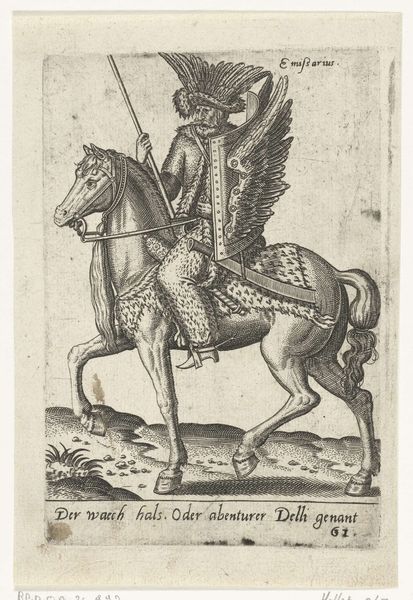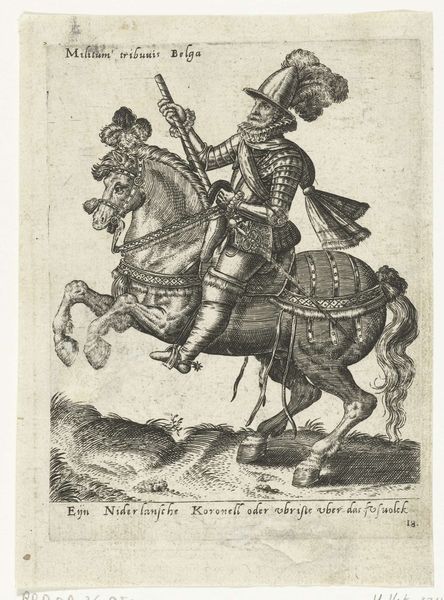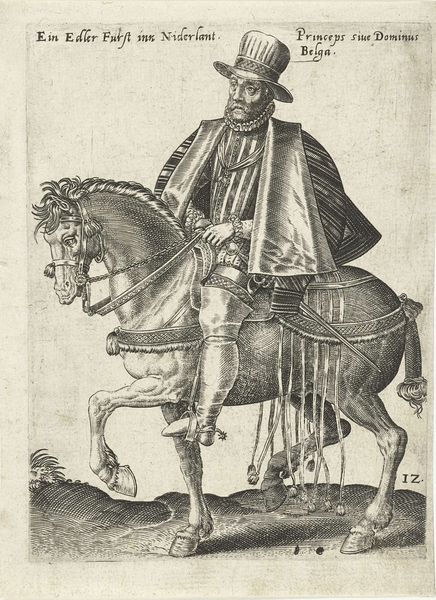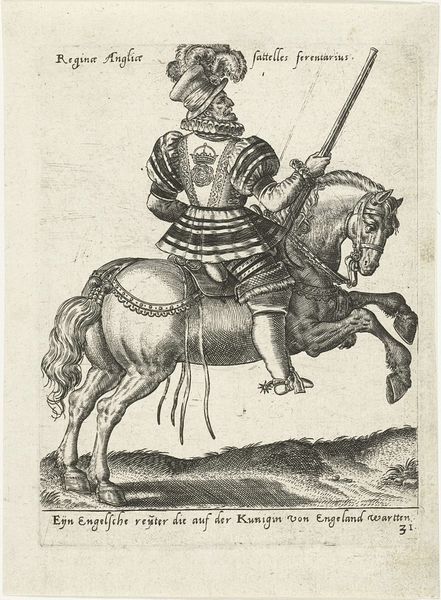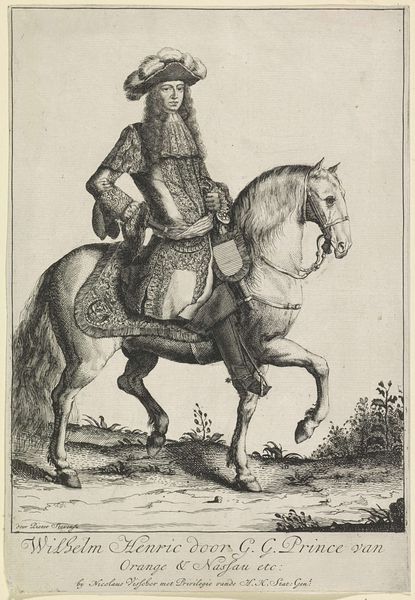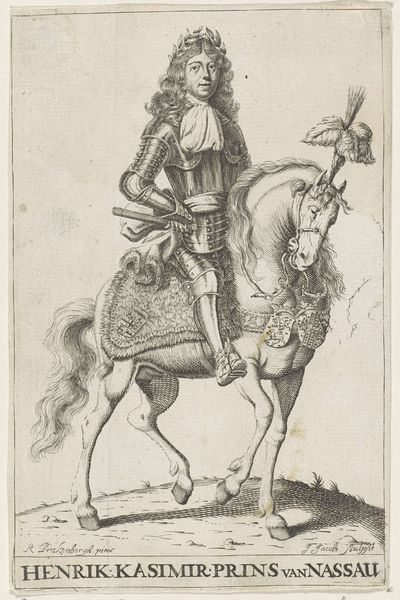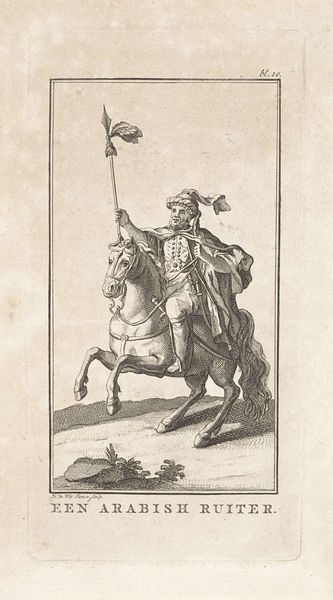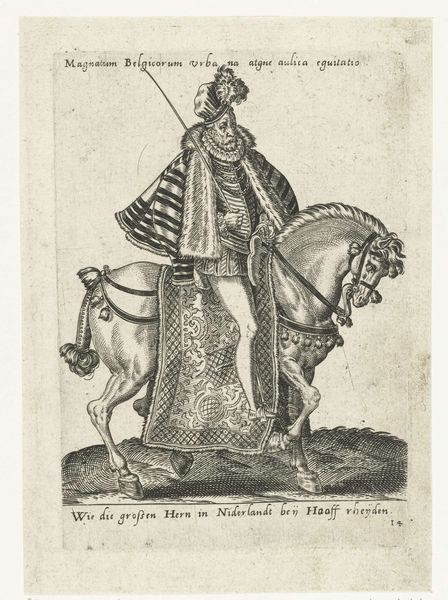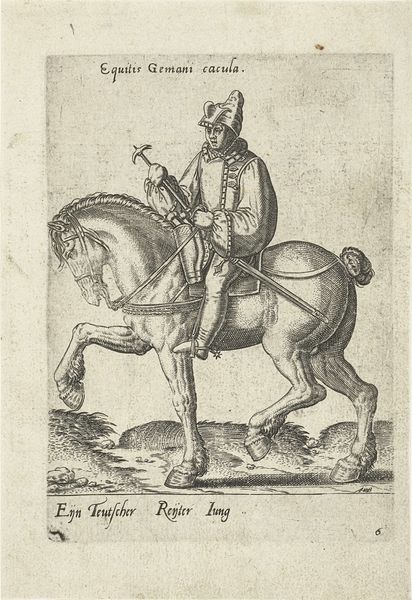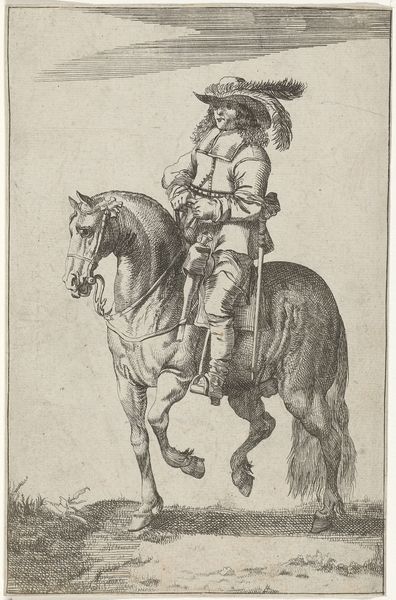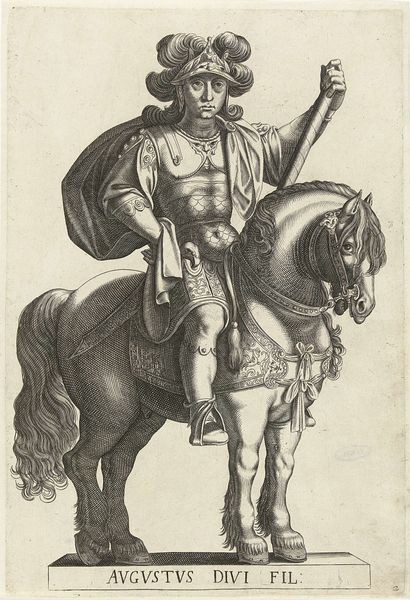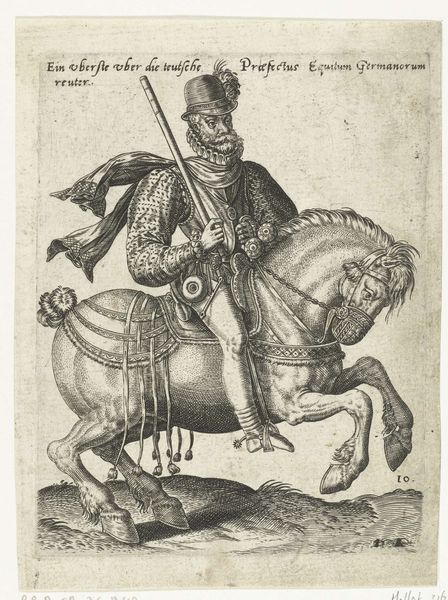
Dimensions: height 149 mm, width 105 mm
Copyright: Rijks Museum: Open Domain
Abraham de Bruyn made this engraving of a German rider with a pistol sometime in the late 16th century. The printmaking process involves meticulously incising lines into a metal plate, applying ink, and then pressing it onto paper. The material quality of the print, its fine lines and tonal range, directly results from this labor-intensive technique. Consider the level of skill required to render such detail – the rider's elaborate costume, the horse's musculature, and the texture of the landscape. This wasn't just about artistic vision; it demanded mastery of tools and an understanding of how ink interacts with paper. Prints like this circulated widely, contributing to a growing visual culture. They served as a means of disseminating information, fashion, and social ideals. While the rider exudes aristocratic power, the print itself is a product of skilled labor, embodying the intersection of craft, commerce, and cultural representation. It reminds us that even images of the elite are made by someone, somewhere, often working behind the scenes.
Comments
No comments
Be the first to comment and join the conversation on the ultimate creative platform.

